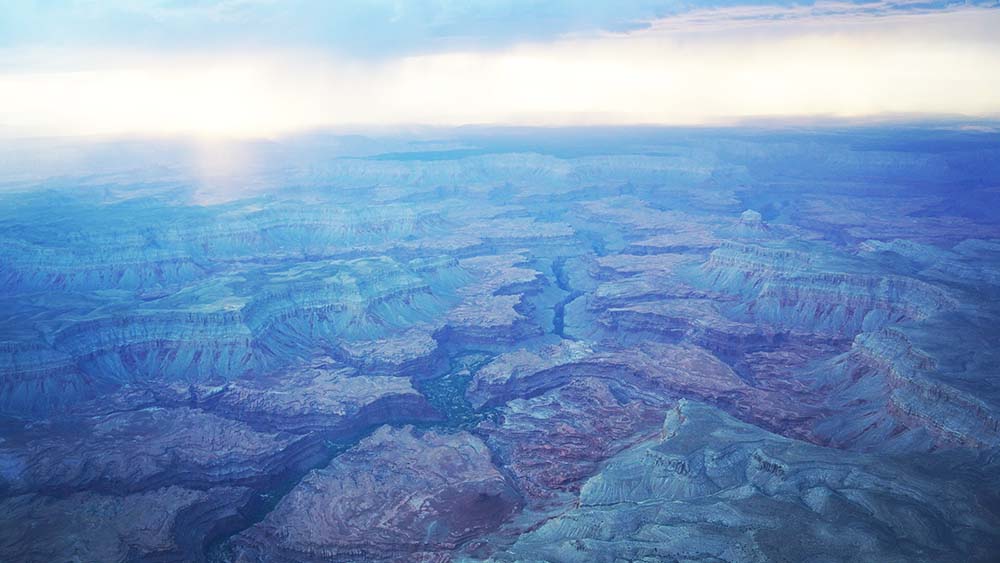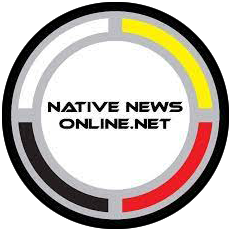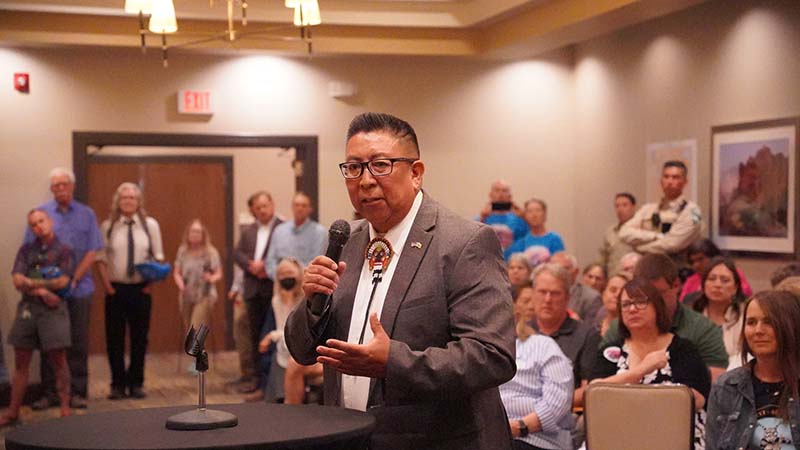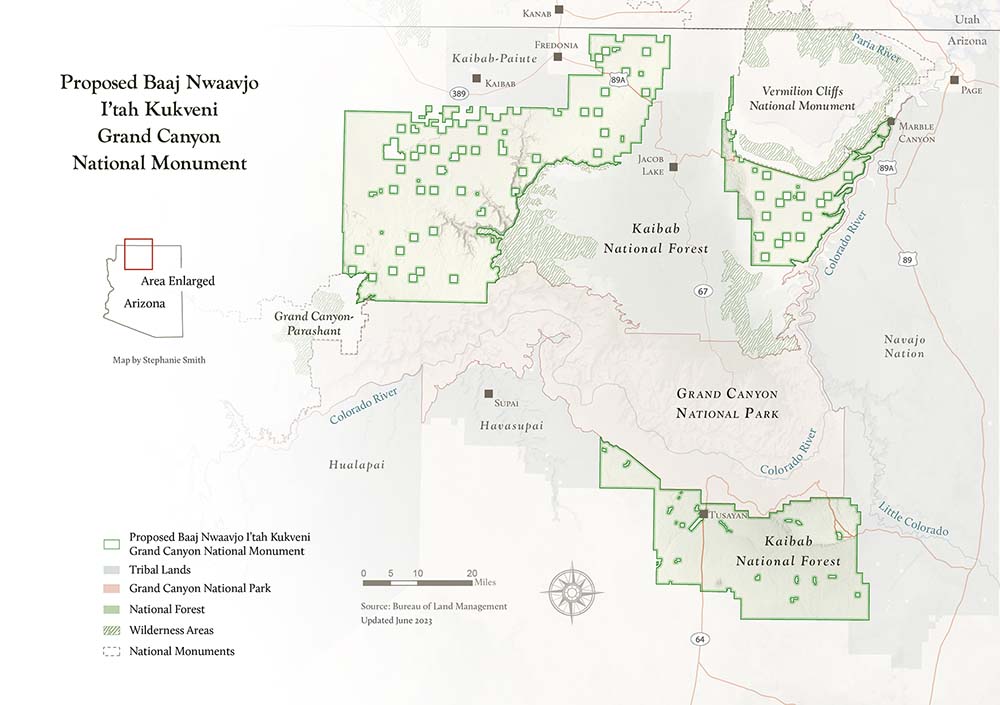
- Details
- By Darren Thompson
Flagstaff, Ariz.—As tribal leaders continue their efforts to protect a million acres adjacent to the Grand Canyon from mining interests, government officials and non-Native farmers say their proposed new monument–or area of protected, memorialized land–would harm the local economy.
The effort to designate the Baaj Nwaavjo I’tah Kukveni Grand Canyon National Monument comes after decades of advocacy work to preserve the Grand Canyon region.
Hundreds of people packed a ballroom at DoubleTree Hotel in Flagstaff, Arizona on July 18, to provide comments to officials from the Department of the Interior’s Bureau of Land Management (BLM) and U.S. Forest Service (USFS), as well as officials from the U.S. Department of Agriculture.
 Make A Monthly Donation Here
Make A Monthly Donation Here
“The Havasupai Tribe supports the creation of the Baaj Nwaavjo I’tah Kukveni Grand Canyon National Monument,” Havasupai Tribe’s Vice-Chairman Edmund Tilousi told the officials. “It will protect areas of the Grand Canyon region such as our traditional sweat lodges, and Red Butte, our sacred mountain. These need to be protected for future generations to come.”
Leaders from Hualapai Tribe, Hopi Tribe, Colorado River Indian Tribes, Paiute Indian Tribe of Utah, and the Shivwits Band of Paiutes also commented in support of designating the Baaj Nwaavjo I’tah Kukveni Grand Canyon National Monument.
Together, they are asking the President to apply the Antiquities Act of 1906 to dedicate the new monument. The law grants U.S. presidents the ability to designate federal public lands, waters, and cultural and historical sites at national monuments.
“We have a blessing, which is behind us in our back door, our reservation,” said Hualapai Tribe’s Vice-Chairman Scott Crozier at Tuesday’s meeting. “Those things we cherish, we take care of because future generations are coming up. These lands we try to protect, those are our resources.”
“For the Hopi, and many Tribal Nations, there is an intimate connection that we have with the land,” said Hopi Tribal Chairman Timothy Nuvangyaoma in his public comments. “It’s our place of emergence, a place where we still hold pilgrimages.”

On April 11, 2023, leaders of the Grand Canyon Tribal Coalition announced in a virtual press conference with U.S. Representative Raúl M. Grijalva (D-AZ) and Senator Kyrsten Sinema (I-AZ) that they also want President Joe Biden to designate these tribal homelands in the Grand Canyon region as Baaj Nwaavjo I’tah Kukveni Grand Canyon National Monument.
The Grand Canyon Tribal Coalition includes leadership representatives of the Havasupai Tribe, Hopi Tribe, Hualapai Tribe, Kaibab, Paiute Tribe of Las Vegas, Moapa Band of Paiutes, Paiute Indian Tribe of Utah, Navajo Nation, San Juan Southern Paiute Tribe, Yavapai – Apache Nation, Pueblo of Zuni, and the Colorado Indian River Tribes.
Baaj nwaavjo means "where tribes roam" for the Havasupai Tribe and i’tah kukveni means "our ancestral footprints" for the Hopi Tribe.
If Biden designated the lands as a national monument, it would permanently protect lands that Tribes’ say they have a cultural and historical ties to. Many Tribes have inhabited and have visited the Grand Canyon region since for immemorial, and there are many natural and cultural resources that many people say would be lost if the lands were not protected.
There are interests to mine uranium in the region, says the Grand Canyon Trust, a nonprofit organization dedicated to Grand Canyon and Colorado Plateau conservation and environmental advocacy. According to the organization, there are currently 598 acting mining claims in the proposed monument area with one uranium mine, the Pinyon Plain Mine.

“When other entities come to destroy our resources and scar the earth, what do we look at?” asked Crozier of extraction industries. “Another scar in the face, another scar in the earth.”
Many of the public comments at Tuesday’s meeting spoke of the Grand Canyon as one of the wonders of the world, and an icon for the state that should be protected for future generations. The National Park Service published a report in 2021 that 4.5 million park visitors spent an estimated $710 million in local gateway regions while visiting Grand Canyon National Park. These expenditures supported approximately 9,500 jobs in the region.
“The Grand Canyon is a melting pot, it draws people from around the world,” Nuvangyaoma said. “From Hopi, our prayers are not just for us, we pray for life around the world and see that visitors coming to enjoy the gift that was given to us.”
There is strong local support to memorialize the lands in the region. Hundreds of entities including conservation organizations, leaders, local governments, and faith leaders have all pledged support to designate the region to a new national monument.
Arizona Governor Katie Hobbs (D), along with 13 state senators and 23 state representitives also expressed support of the monument in two separate letters respectively, to Biden dated May 30, 2023. Hobbs noted the Arizona Game and Fish Department is willing to contribute to the management of the new monument's land.
Flagstaff Mayor Becky Daggett and the Coconino County Board of Supervisors support the designation as well.
Opposition
Tuesday’s session also heard from people who spoke against the monument including a spokesperson for Arizona Republican Congressman Paul Gosar, who represents the state’s western 9th district, sent a staff member to present a comment opposing the efforts to memorialize additional public lands. In his statement, he said that 50% of Arizona’s lands is designated federal land and cannot afford to have more land taken away.
“The move represents the Biden Administration’s massive land grab effort,” said a spokesperson for Gosar, a Republican who represents Arizona’s 9th district. “It would have devastating impacts on Mojave County. This proposal circumvents Congressional authority, threatens the American public’s access and use of federal lands.”
Some voiced that the proposed monument poses a threat to grazing and agriculture in the Arizona Strip, the region north of the Grand Canyon in Arizona. Thousands of private acres would be taken if the monument were to be designated in this region.
A Kanab (Utah) city council member commented that he would be losing several hundred acres of his private land. “That is a problem,” he said. “That is un-American.”
He also shared that Utah’s Kane, Washington, and Iron Counties have all unanimously passed resolutions in opposition to the designation of the proposed monument.
“This affects Utah, and it affects Arizona,” he said. “I am 100% opposed.”

History
The only operating mine in the proposed monument landscape is the Pinyon Plain Mine, formerly the Canyon Uranium Mine, in the Kaibab National Forest about 6 miles southeast of the town of Tusayan. It’s operated by Energy Fuels.
There have been previous efforts to preserve the region surrounding the Grand Canyon National Park. Currently, there is a 20-year moratorium on new mining claims in the public lands around the park. The ban was issued in 2012, by then-Secretary of Interior Ken Salazar. Since the mine was in operations prior to the moratorium, the mine has existing rights to continue operations.
Previously, Representative Raúl Grijalva introduced the Grand Canyon Protection Act in Congress. The bill would have protected over a million acres of federal lands adjacent to the Grand Canyon National Park in Arizona from mining. Arizona’s Senators Mark Kelly (D-AZ) and Krysten Sinema (I-AZ) also introduced companion bills in the Senate to project the region. However, since the bills failed to pass, Grijalva switched tactics to pressuring Biden to memorialize the land by making it a national monument.
Interior Secretary Deb Haaland visited the Grand Canyon region on May 20 to hear from Tribal leaders, local elected officials, and community members about their efforts to designate the Baaj Nwaavjo I’tah Kukveni Grand Canyon National Monument. The Department of Interior said in a press release that Secretary Haaland’s visit is the federal government’s ongoing engagement and public dialogue related to the proposal of the monument.
Tuesday's meeting was the beginning of a two-year process, where various meetings will be held between stakeholders and the officials from the federal government. In a press release issued by the Bureau of Land Management on July 10, the BLM said that the meeting is part of the Biden-Harris administration’s commitment to support locally led conservation efforts across the country.
Federal officials that attended the meeting were the U.S. Department of Interior’s Principal Deputy Assistant Secretary for Land and Minerals Management Laura Daniel-Davis, U.S. Department of Agriculture’s Under Secretary for Natural Resources and Environment Dr. Homer Wilkes, U.S. Department of Interior’s Director of Bureau of Land Management Tracy Stone-Manning, Arizona’s Director of Bureau of Land Management Raymond Sauzo, and U.S. Forest Service’s Regional Forest Michiko Martin.
More Stories Like This
Apache Leader Walks 60 Miles to Court Hearing That Will Decide Fate of Sacred Oak FlatRappahannock Tribe Raises Sovereignty and Environmental Concerns Over Caroline County Water Permit
Klamath Indigenous Land Trust Purchases 10,000 Acres as Salmon Return
Trump signs law that revokes some limits on drilling in Alaska’s National Petroleum Reserve
Southern Sierra Miwuk Nation Gets 900-Acres ofLand Back
Help us defend tribal sovereignty.
At Native News Online, our mission is rooted in telling the stories that strengthen sovereignty and uplift Indigenous voices — not just at year’s end, but every single day.
Because of your generosity last year, we were able to keep our reporters on the ground in tribal communities, at national gatherings and in the halls of Congress — covering the issues that matter most to Indian Country: sovereignty, culture, education, health and economic opportunity.
That support sustained us through a tough year in 2025. Now, as we look to the year ahead, we need your help right now to ensure warrior journalism remains strong — reporting that defends tribal sovereignty, amplifies Native truth, and holds power accountable.
 The stakes couldn't be higher. Your support keeps Native voices heard, Native stories told and Native sovereignty defended.
The stakes couldn't be higher. Your support keeps Native voices heard, Native stories told and Native sovereignty defended.
Stand with Warrior Journalism today.
Levi Rickert (Potawatomi), Editor & Publisher
